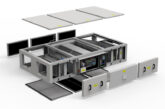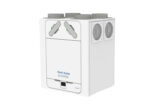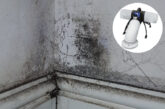
The experts at Vent-Axia provide advice on Part F of the Building Regulations for commercial and industrial buildings.
Part F of the Building Regulations came into effect from 15th June 2022, but how do they affect commercial and industrial clients?
With Part F (Means of Ventilation) focusing heavily on health and wellbeing, a key addition to the document is a new section on monitoring indoor air quality (IAQ). Other key points include designing ventilation systems to minimise external pollutants entering indoor spaces, and assessing ventilation requirements when installing energy efficiency measures to ensure good IAQ.
The scope of Part F of the Building Regulations covers both new build and refurbishment and now looks to both minimise the entry of external pollutants and ensure humidity and pollutants are extracted effectively and efficiently. The document also includes guidance on minimum levels of air quality, to ensure good occupant health, and considers ways to monitor IAQ as part of this. Furthermore, the document looks at energy efficiency and ventilation requirements.
While the Regulations cover both residential and commercial, a new change for the Building Regulations is that flats with communal areas are now seen as commercial rather than residential buildings.
With the pandemic highlighting the importance of good ventilation to mitigate virus transmission, Part F is also introducing improvements to ventilation in new non-residential properties to help prevent the spread of airborne viruses. In fact, it states that in “locations where continuous talking or singing takes place, or there are high levels of physical activity (such as dancing, playing sport or exercising), providing ventilation sufficient to keep CO2 levels below 800ppm is recommended”.
There is also a sub-section entitled ‘Indoor Air Quality Monitoring’, which states that in new buildings in the occupiable rooms it refers that there “should have a means of monitoring the indoor air quality. This may be achieved using CO2 monitors or other means of measuring indoor air quality.” These actions will help ensure better indoor air quality in non-residential properties.
Published on 15th December 2021, the Building Regulations are being hailed as a “vital step to improve indoor air quality”.
Vent-Axia is well prepared for the amendments to Part F for non-residential properties, with a wide range of sensors. These include sensors for CO2, which can be discreetly located on a wall and can intelligently boost ventilation based on the detected CO2 levels. They can also provide a warning indication for occupants if CO2 levels rise above acceptable levels with a useful traffic light system on the front, so occupants can activate purge ventilation when required.
These sensors are designed to work in conjunction with a wide range of ventilation solutions including the Sentinel range of demand controlled inline fans, suitable for either supply of fresh air or extracts of stale air. The inclusion of a CO2 sensor in the control provides optimal air quality control while minimising the actual running costs of the fan.
For more simplistic ventilation solutions where ducting cannot be easily installed Vent-Axia’s Lo-Carbon T-Series fans can provide background or purge ventilation and are easily fitted to an existing window or through a wall.
Get more details about Vent-Axia’s CPD Training Programme for installers here









